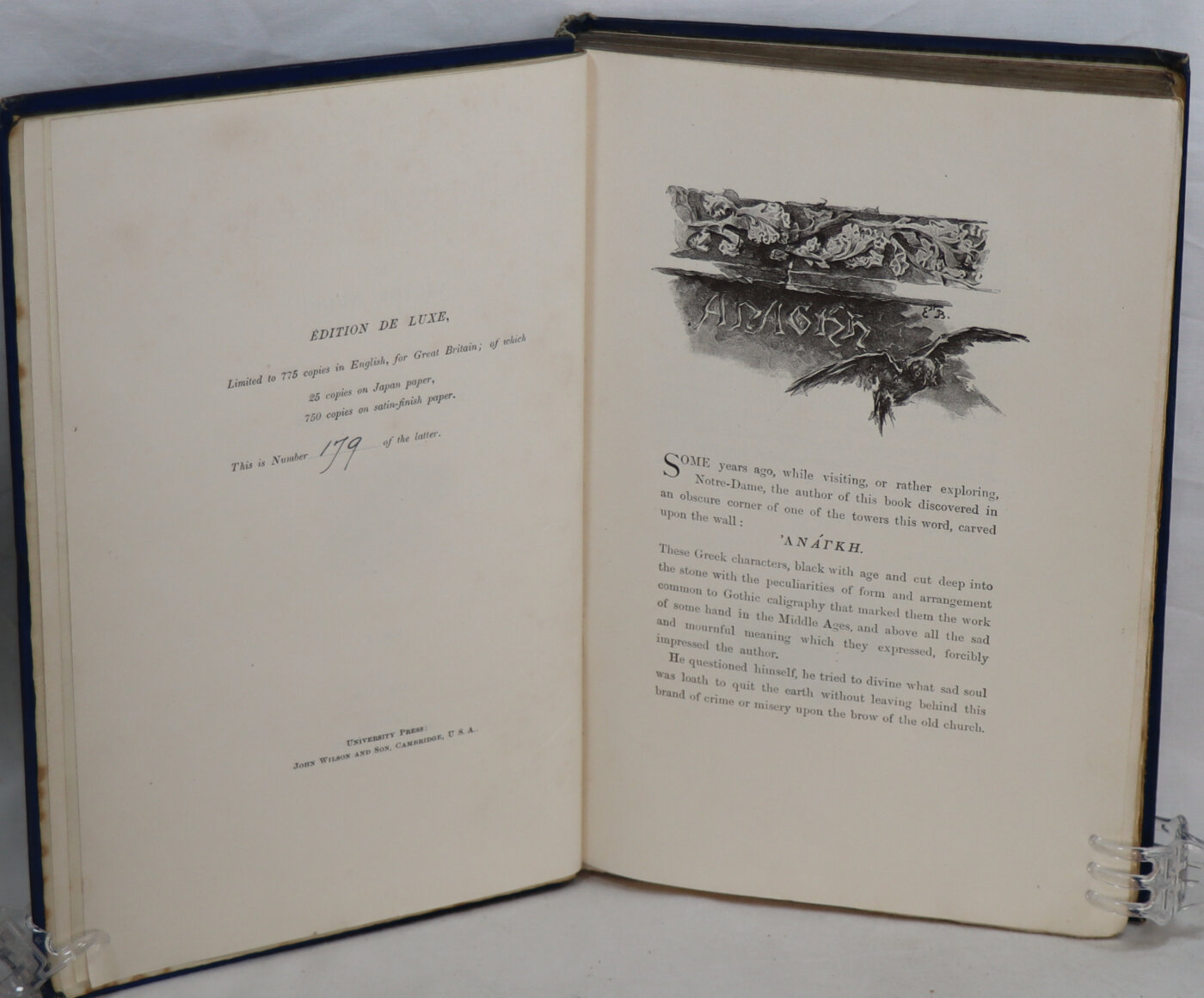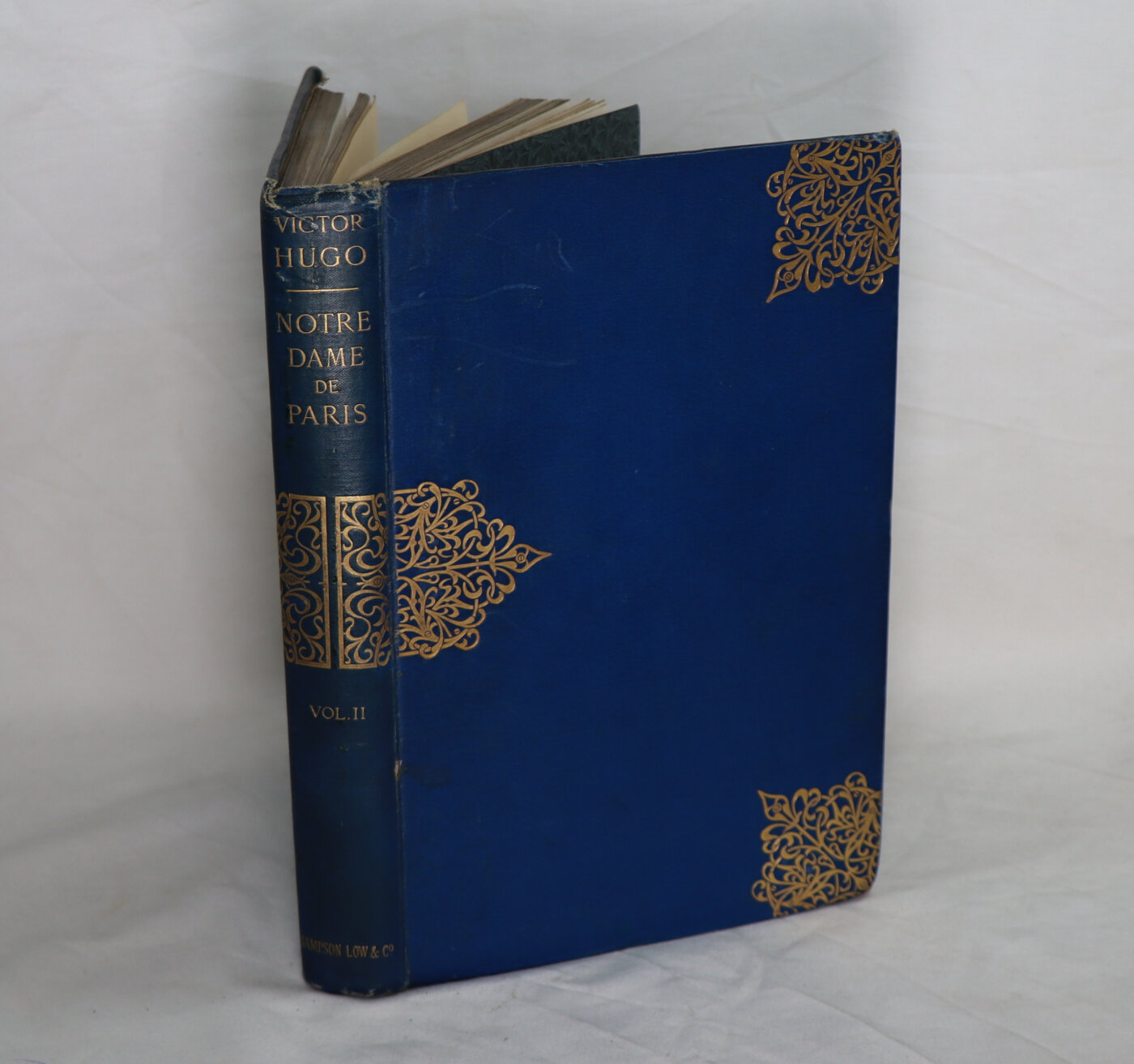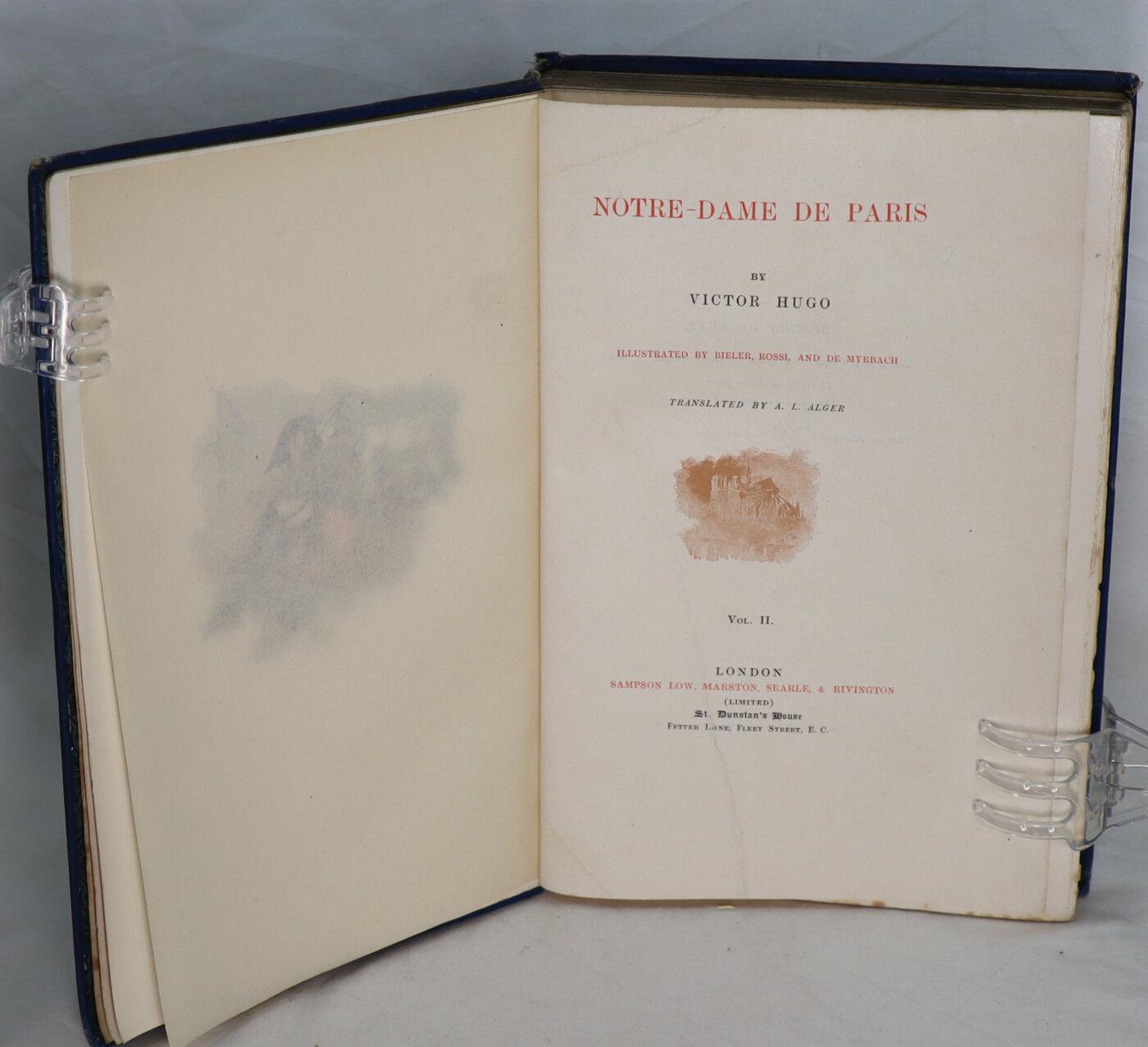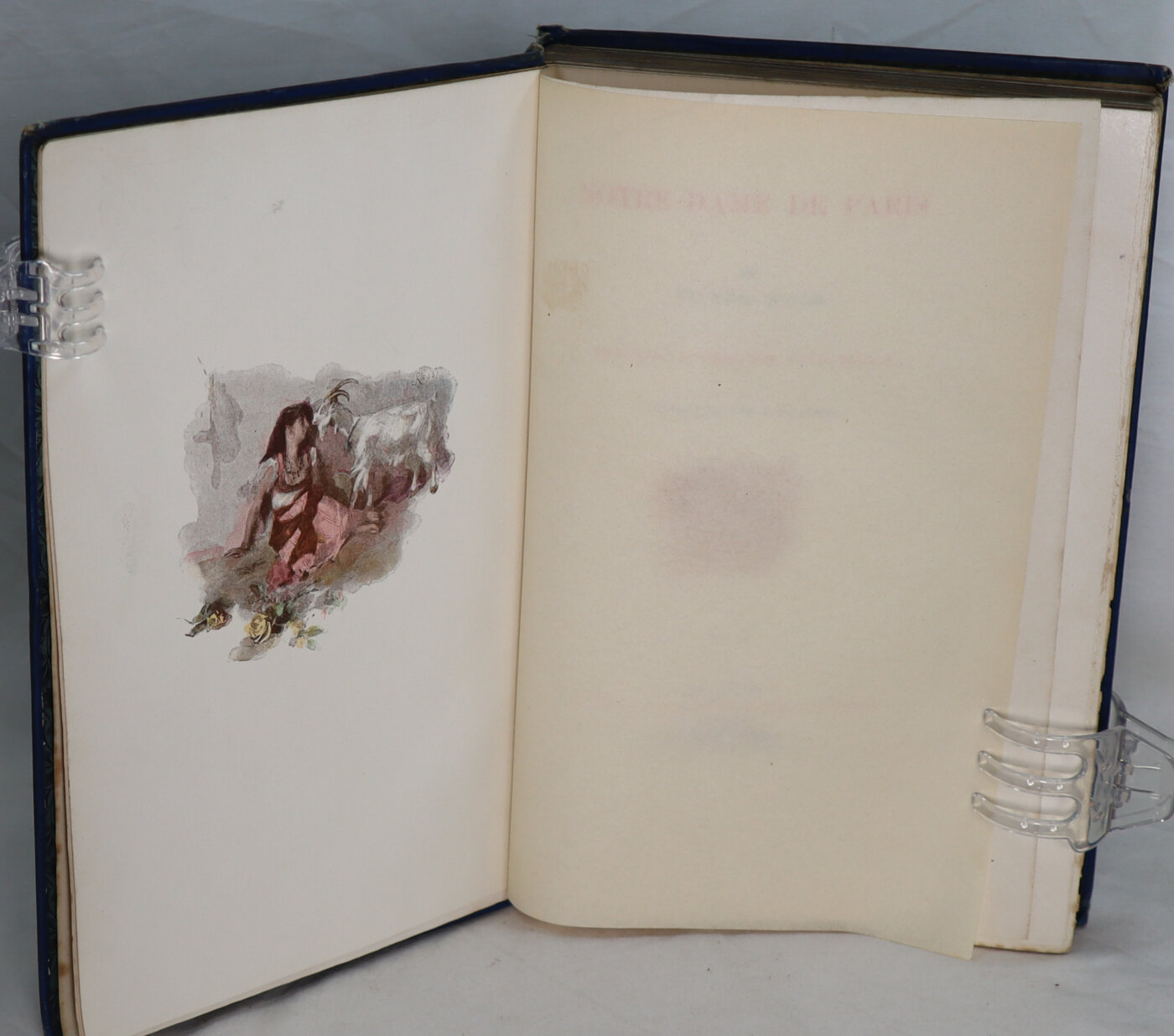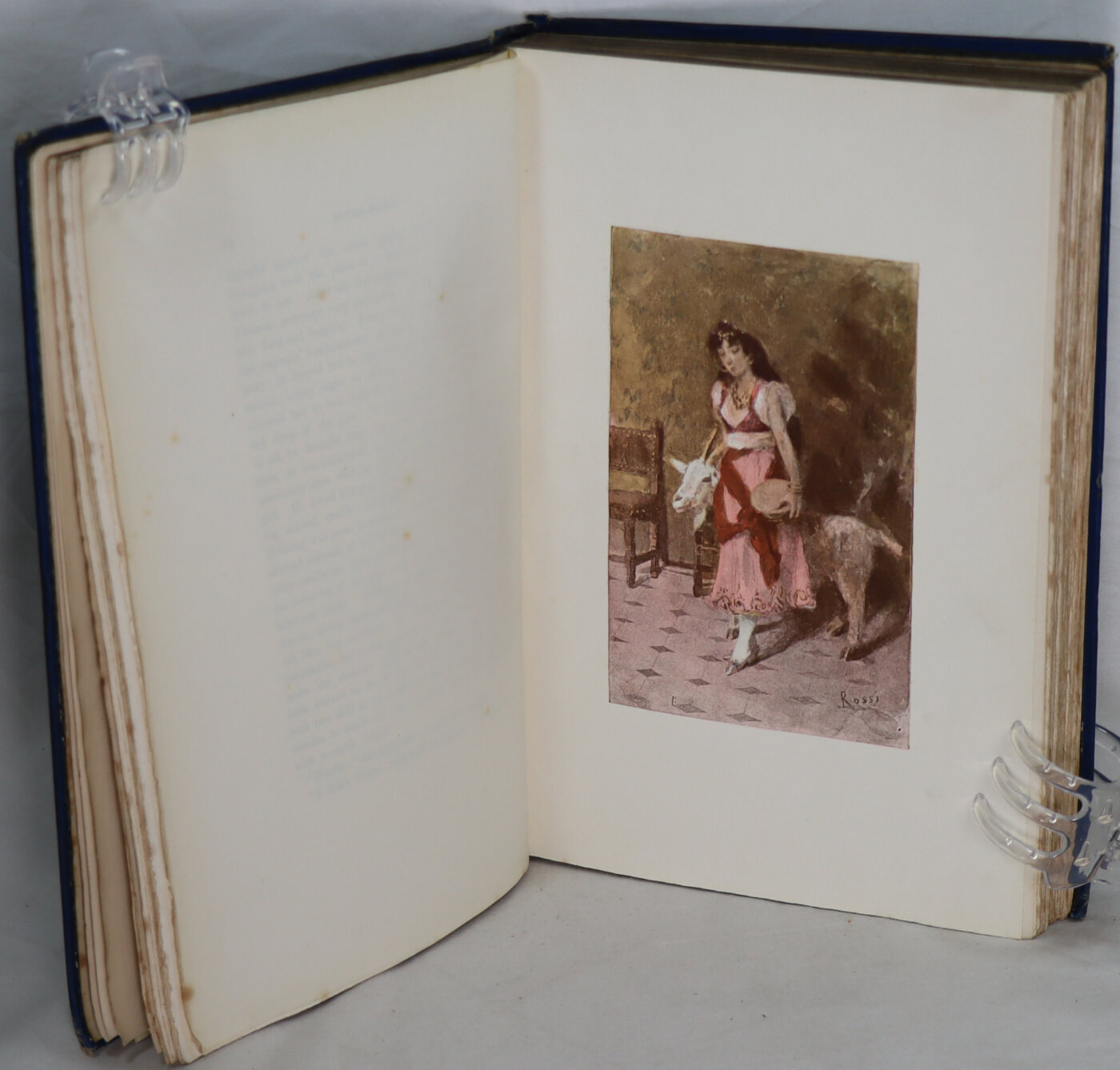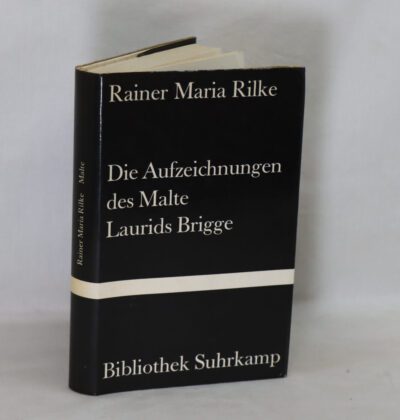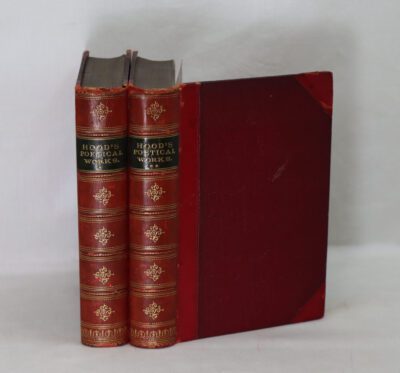Notre Dame de Paris. Vols. I & II.
By Victor Hugo
Printed: 1882
Publisher: Sampson Low Marston Searle & Rivington. Lon don
Edition: Limited edition of 775
| Dimensions | 17 × 24 × 2 cm |
|---|---|
| Language |
Language: English
Size (cminches): 17 x 24 x 2
Condition: Very good (See explanation of ratings)
Your items
Item information
Description
Navy cloth binding with gilt title and decoration on the spine. Dimensions are for one volume.
Limited edition No 179 of 775.
F.B.A. provides an in-depth photographic presentation of this item to stimulate your feeling and touch. More traditional book descriptions are immediately available
Note: This book carries the £5.00 discount to those that subscribe to the F.B.A. mailing list.
1882. Translated by A. Langdon Alger as Notre-Dame de Paris.
This book has the appendage at the end of book II explaining the reason why additional chapters are to be found in this publication.
These volumes are limited editions, 179 out of a batch of 775.Both books are in good condition with only a little wear showing on the binding. The interior is fine with many great illustrations. They are English translations of Victor Hugo’s novel ‘The Hunchback of Notre-Dame’ which was published around 1831. Note: The novel’s French title, Notre-Dame de Paris, refers to Notre-Dame Cathedral. Frederic Shoberl’s 1833 English translation was published as The Hunchback of Notre-Dame. This became the generally used title in English, referring to Quasimodo, Notre-Dame’s bell-ringer. Victor Hugo initially agreed to write Notre-Dame de Paris in 1828. Due to Hugo’s other literary projects, the novel fell by the wayside until 1830. A primary theme of the novel is that of the value of Gothic architecture, which was neglected and often destroyed to be replaced by new buildings or defaced by replacement of parts of buildings in a newer style. For instance, the medieval stained glass panels of Notre-Dame de Paris had been replaced by white glass to let more light into the church. A few years earlier, Hugo had already published a paper entitled Guerre aux Démolisseurs (War [declared] on the Demolishers) specifically aimed at saving Paris’ medieval architecture. The agreement with his original publisher, Gosselin, was that the book would be finished that same year, but Hugo was constantly delayed due to the demands of other projects. In the summer of 1830, Gosselin demanded that Hugo complete the book by February 1831. Beginning in September 1830, Hugo worked nonstop on the project thereafter.
Legend has it that Hugo locked himself in his room, getting rid of his clothes to write the novel on time, the idea being he couldn’t go outside without clothes. However, the validity of the truth of the story has muddled down over time.
Victor-Marie Hugo, vicomte Hugo (French; 26 February 1802 – 22 May 1885), sometimes nicknamed the Ocean Man, was a French Romantic writer and politician. During a literary career that spanned more than sixty years, he wrote in a variety of genres and forms.
His most famous works are the novels The Hunchback of Notre-Dame (1831) and Les Misérables (1862). In France, Hugo is renowned for his poetry collections, such as Les Contemplations (The Contemplations) and La Légende des siècles (The Legend of the Ages). Hugo was at the forefront of the Romantic literary movement with his play Cromwell and drama Hernani. Many of his works have inspired music, both during his lifetime and after his death, including the opera Rigoletto and the musicals Les Misérables and Notre-Dame de Paris. He produced more than 4,000 drawings in his lifetime, and campaigned for social causes such as the abolition of capital punishment and slavery.
Although he was a committed royalist when young, Hugo’s views changed as the decades passed, and he became a passionate supporter of republicanism, serving in politics as both deputy and senator. His work touched upon most of the political and social issues and the artistic trends of his time. His opposition to absolutism, and his literary stature, established him as a national hero. Hugo died on 22 May 1885, aged 83. He was given a state funeral in the Panthéon of Paris, which was attended by over 2 million people, the largest in French history.
Want to know more about this item?

Share this Page with a friend


